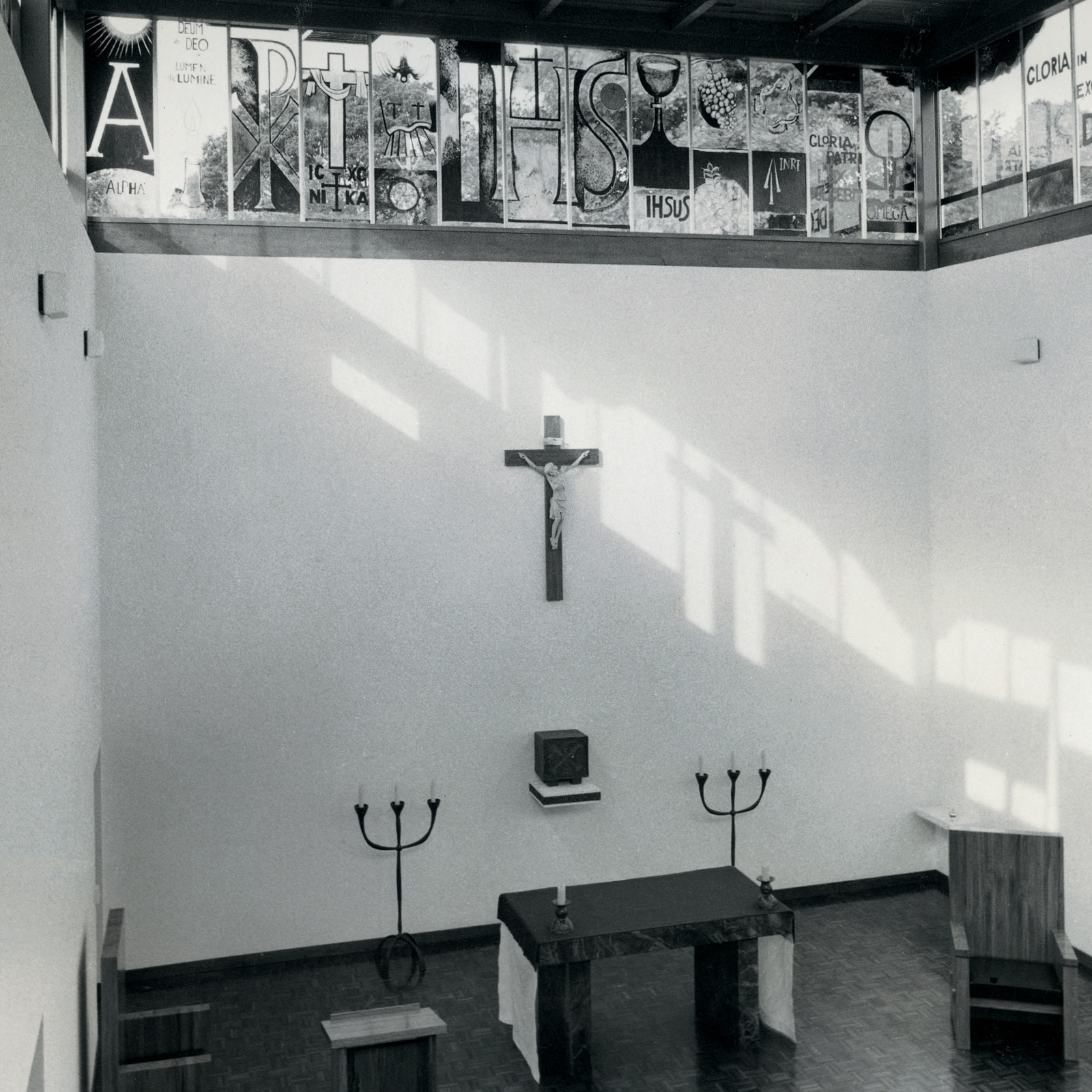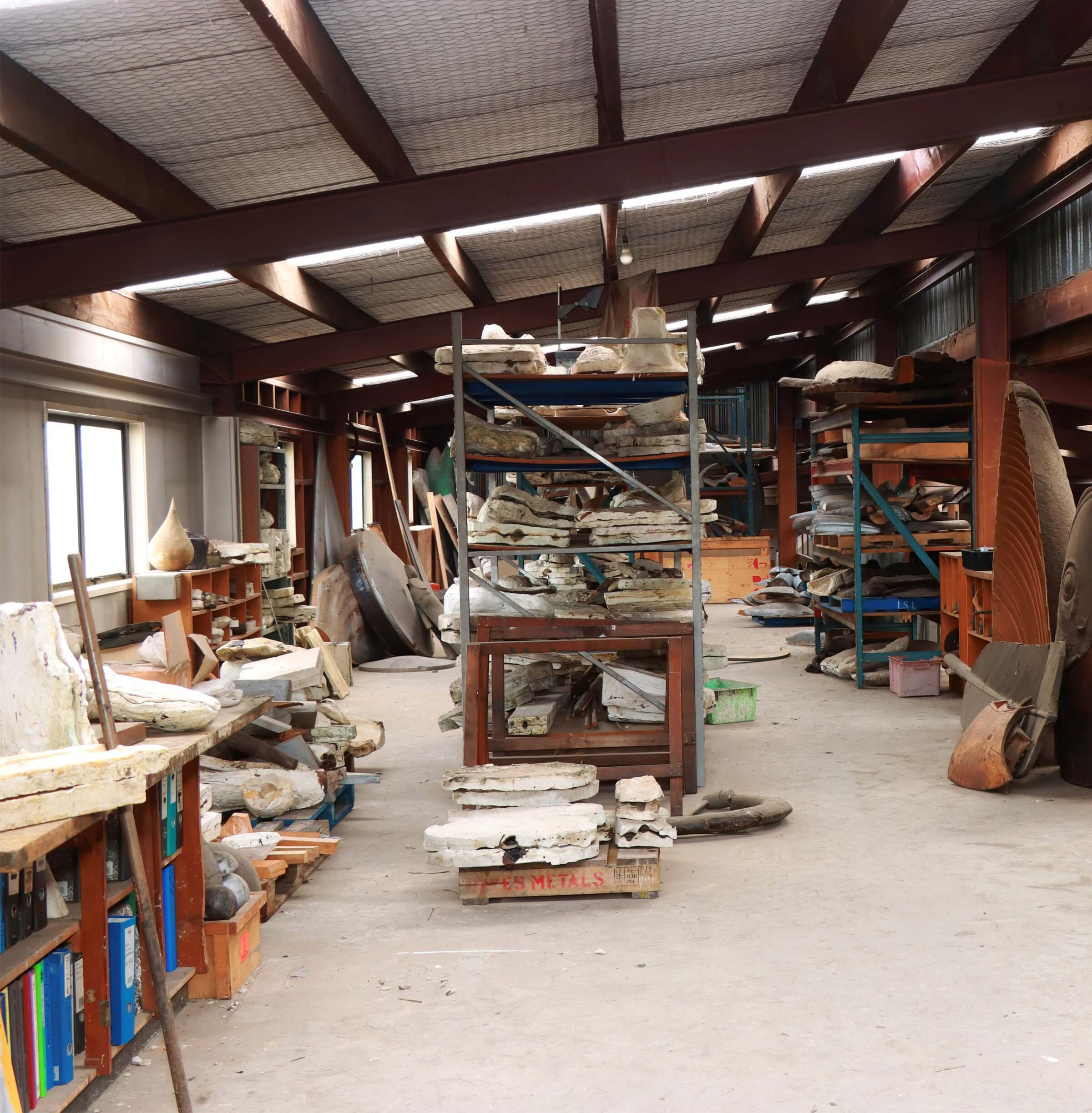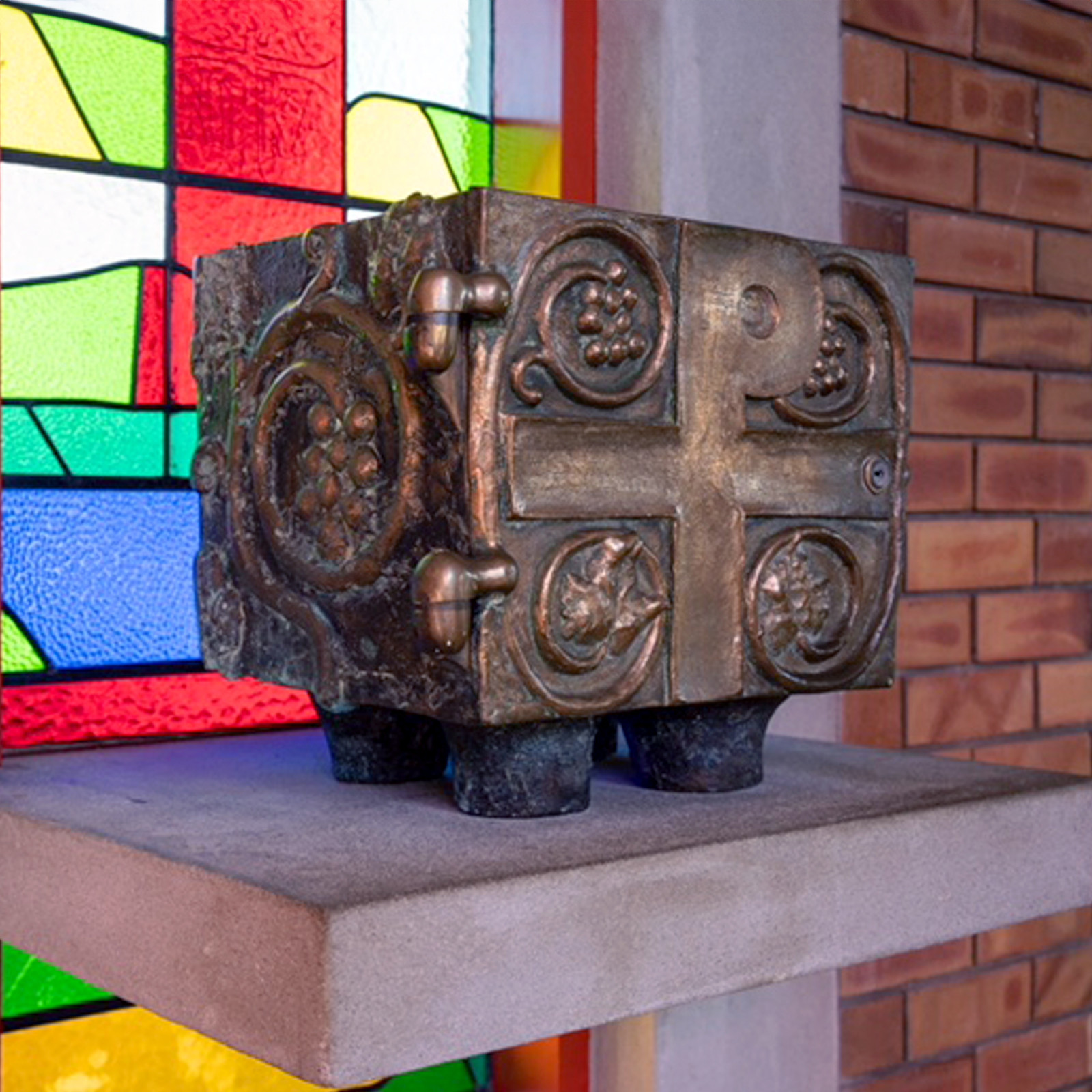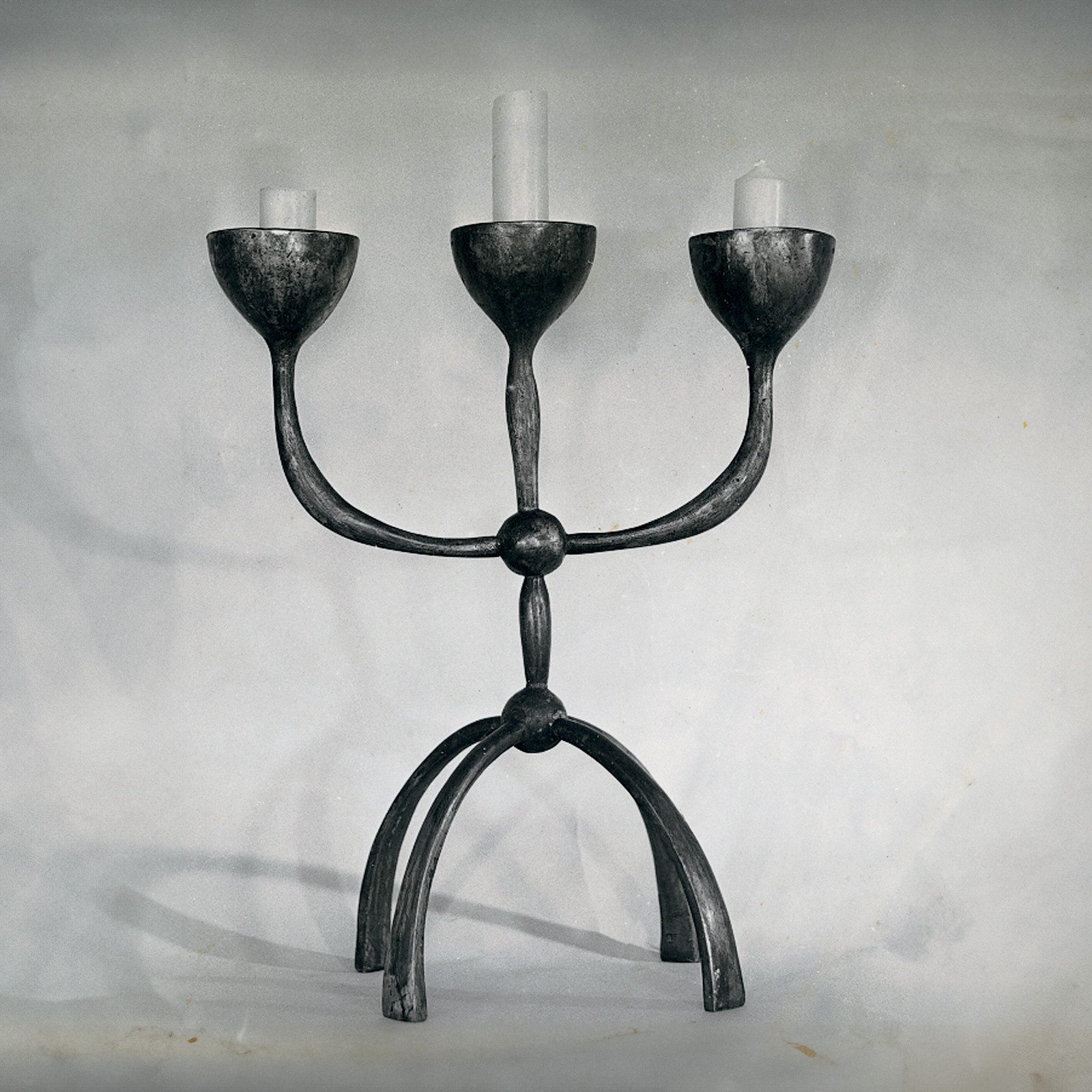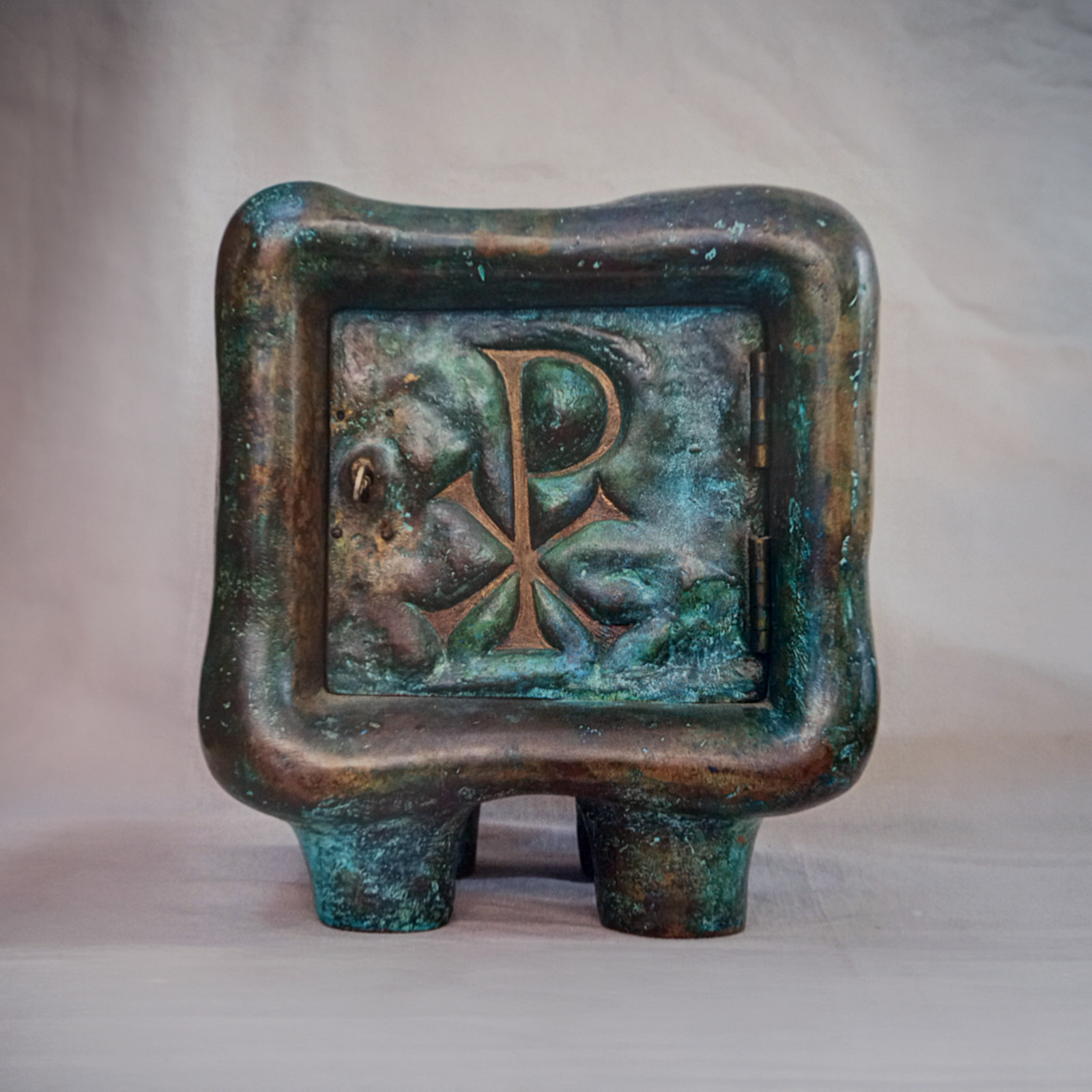1960 - 1975 The Church Works
1960 - 1975 The Church Works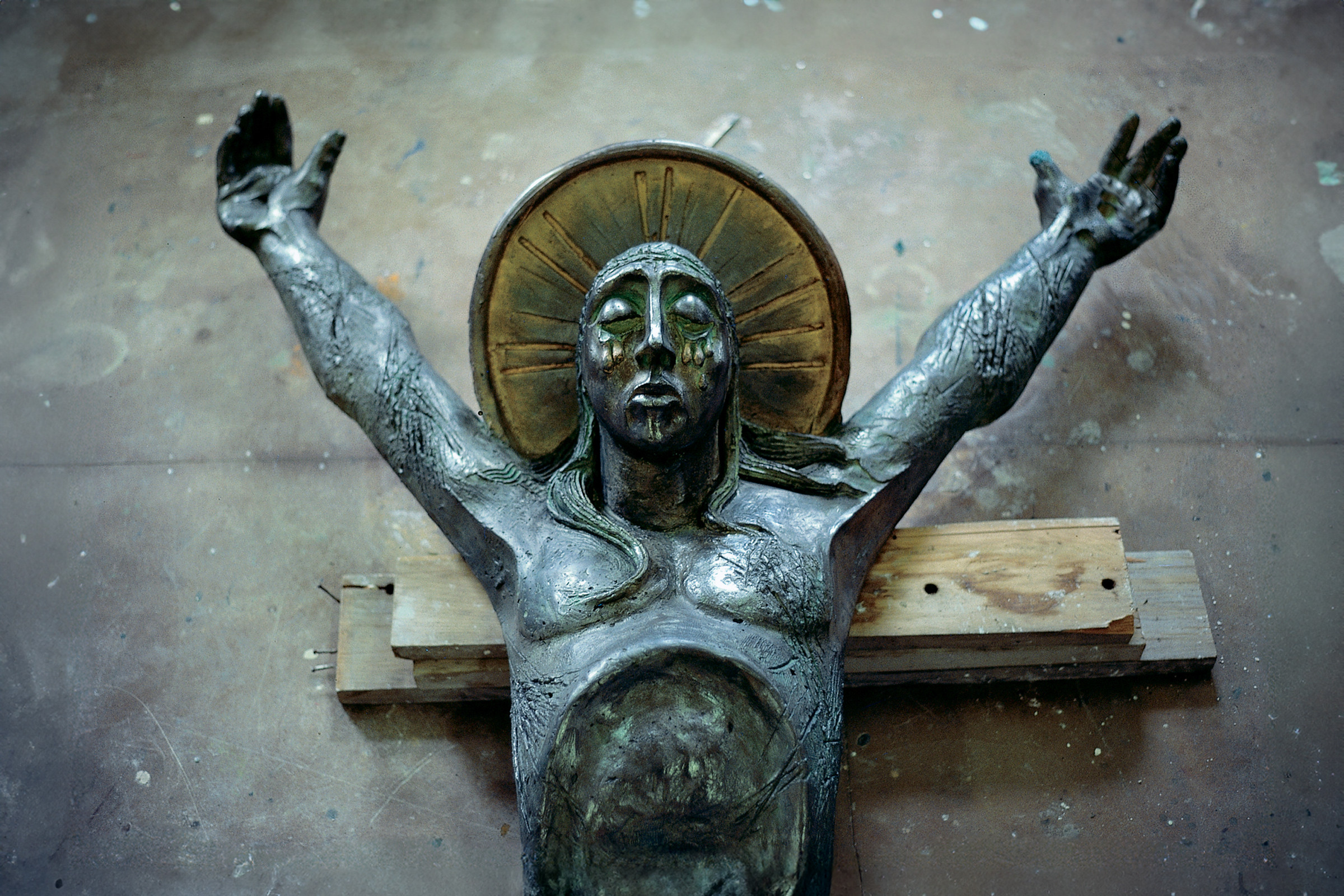
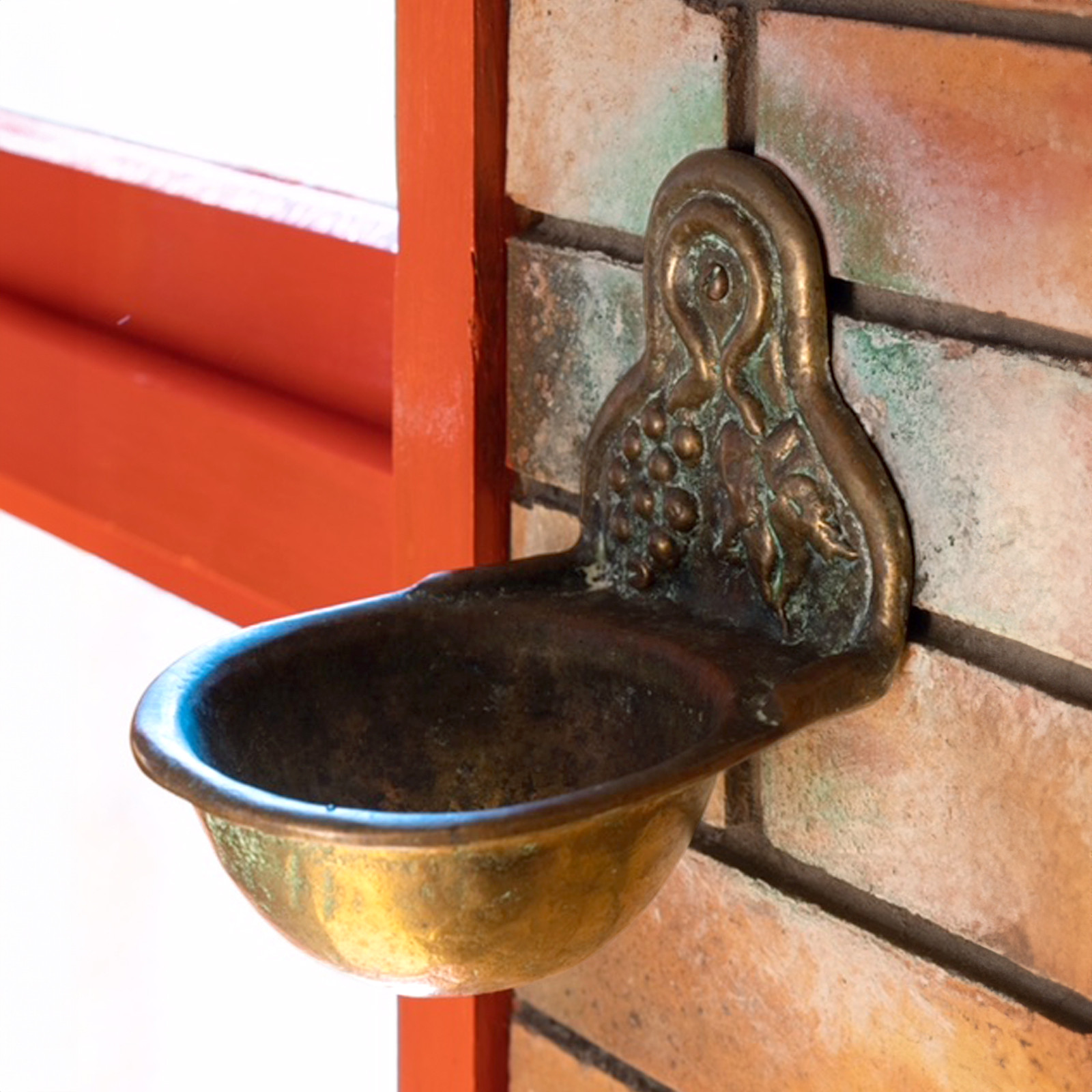
Mostly, the work they produced was in keeping with 50s modernism, but with a rugged twist.
The Church Work
The transition from art school graduate to artist is never simple. There are problems of where to show art (Barry Lett Gallery in Auckland was one of the fledgelings), and where to make it. Sometimes the biggest hurdle is how to finance it. Determined not to take on teaching in the early stages, Paul hoped his skills in bronze casting might enable him to produce sellable works. He had developed these skills during his time at art school. Paul often worked off site with bronze caster Ron Ramsby at his foundry. Ramsby had produced several significant works in Auckland, many of which Paul lent a hand with. The most notable was probably Molly McCallister’s Māori Warrior. Located at the bottom of Queen Street, in the central business district, this was a work Paul had much admiration for. From this start, he began building his own furnace in the backyard of his Mt. Eden flat. He produced brick dust moulds (a process more cumbersome than current casting methods), and convinced a few of his flatmates to help with some of the pushing, shoving, and pouring.
Concurrent with this, Paul kept in touch with his art school contacts. One late afternoon, at the Kiwi pub before six o’clock closing, his art school lecturer Colin McCahon introduced him to architect James Hackshaw about a job. Hackshaw had been part of Group Architects, which was part of a pivotal change in the architecture of New Zealand. The Group had the aim of developing a style that reflected a New Zealand identity, different to all the other prototypes that had washed up in New Zealand. They wanted to make something pertinent to this young country of harsh light and practical pragmatism. Something that was new while also being raw and distinctive. Mostly, the work they produced was in keeping with ‘50s modernism, but with a rugged twist. They often used materials like concrete block and corrugated iron, generally more associated with crude farm buildings and sheds than with domestic housing. Detailing, like architraves and kickboards, were simplified or cast out entirely.
An important part of Hackshaw’s work in the 1960s and 1970s was designing churches and schools for the Catholic Diocese of Auckland. His approach to designing these churches was inspired by the new doctrines of ‘Vatican ll’, or the Second Vatican Council in the early 1960s. The Council ushered in an ethos which sought to make church buildings community gathering places instead of formal and formidable monuments. Hackshaw’s vision dovetailed with this perfectly.
What followed was locally designed built and furnished churches. Craftsmen from the local area were employed to build the fittings, instead of shipping in pre-made items from Italy. So Hackshaw worked with McCahon to get stained glass windows designed, a big shift from their European counterparts. McCahon then introduced Paul who, with casting prowess, could make the candlesticks, tabernacles, and statuary. Hackshaw designed the timber furniture. The deal might have been made over a jug of beer, but it stuck. This provided thirteen years of work for the young artist.
From 1965 to 1978 Paul produced an array of church items including holy water fonts, crucifixes, candleholders, candelabras, and tabernacles. The items produced were entirely different from the former manufactured imports. They had qualities of mass and solidity, and a styling that was distinct to 1960s and 1970s New Zealand, along with coarse, strong modelling. Some larger crucifixes were made in fondue cement, and a bronze bust of Archbishop James Liston was commissioned for Liston College.
More importantly than the much-needed income, it sowed a seed, which in another 15 years would begin to grow and then bloom. It gave Paul the knowledge and confidence to pursue a career as a full time artist.
